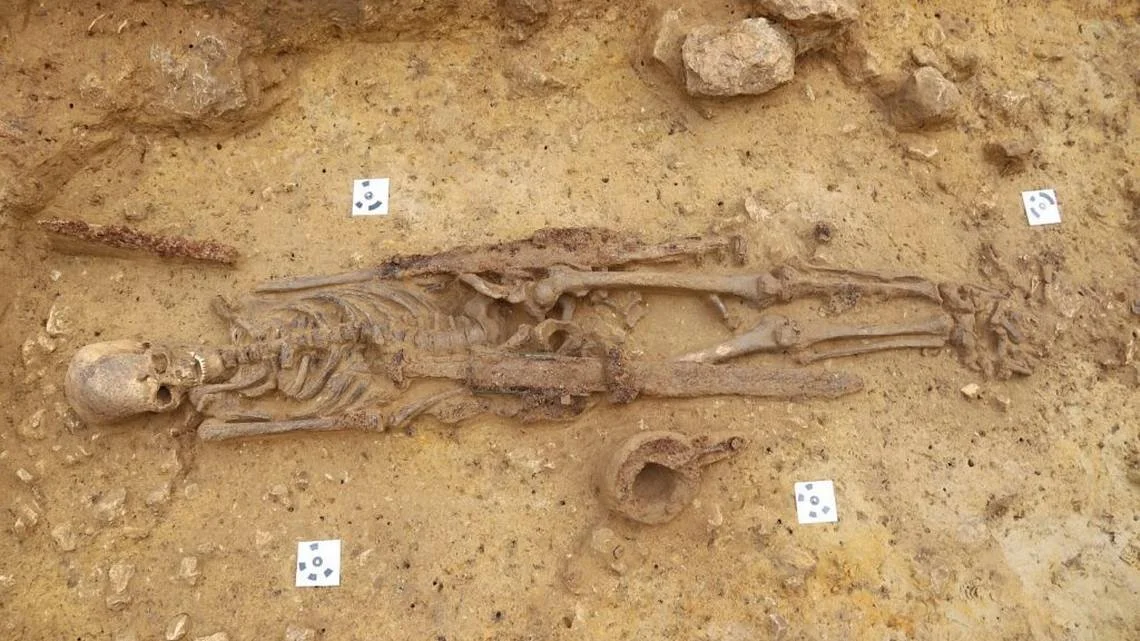Archaeologists didn't anticipate finding anything when they dug up a cemetery in Germany that was thousands of years old. A long time ago, grave robbers had entered the area and stolen who knows what from unknown locations.
Archaeologists excavating an early medieval cemetery in Ingelheim found the untouched burial of a seventh century warrior, photos show. Photo from the City of Ingelheim and Christoph Bassler
However, the looters overlooked something, and archaeologists were determined not to make the same error twice.
According to an announcement made by the City of Ingelheim on August 4th, it was a round piece of metal jutting out of the ground that initially drew the attention of archaeologists in Ingelheim.
Bassler claimed that the metal fragment belonged to a shield. It is challenging to connect the artifact to a particular funeral because it was found between two graves that had been robbed.
So they carried on digging and discovered an undiscovered burial.
According to the press release, a warrior was buried in the 1,300-year-old burial. In the seventh century, a 30- to 40-year-old man was buried beside nearly every kind of weapon available at the period.
Archaeologists discovered a double-edged spatha sword that was nearly 3 feet long under his right arm. Probably his most valued possession was this sword. He carried a broad seax, a short, hefty sword intended for slicing, by his left arm. According to the statement, the burial also contained a belt, knife, lance, and bronze scabbard.
Images of the warrior's burial were posted on Facebook by Kaiserpfalz Ingelheim, or the Ingelheim Imperial Palace, on August 9.
The fighter was most likely a Frankish guy, according to the style of his shield and weapons, experts say. He was buried in a now-disintegrated casket, as evidenced by his skeletal position.
According to Britannica, the Franks "forcibly settled" what is currently southern Germany starting in the sixth century. They ruled Franconia, which encompassed Frankfurt, Stuttgart, and Munich, until an additional royal dynasty took over in the eighth century.
A close-up view of the warrior’s grave from the deceased’s left-hand side. Photo from Kaiserpfalz Ingelheim
Archaeologists claimed that the 1,300-year-old warrior was not a trained combatant. Standing armies did not exist in his time as they do today. Instead, he probably looked after his own gear and went into fight with his leader.
According to the announcement, his exact cause of death is unknown, however he could have passed away from a disease or an injury sustained in war. The latter cause of death would not be unexpected, according to archaeologists, who highlighted the violence-themed burial items.
According to local officials, the objects were taken out of the cemetery for cleaning and further investigation.
About 330 kilometers southwest of Berlin is Ingelheim, also referred to as Ingelheim am Rhein.








